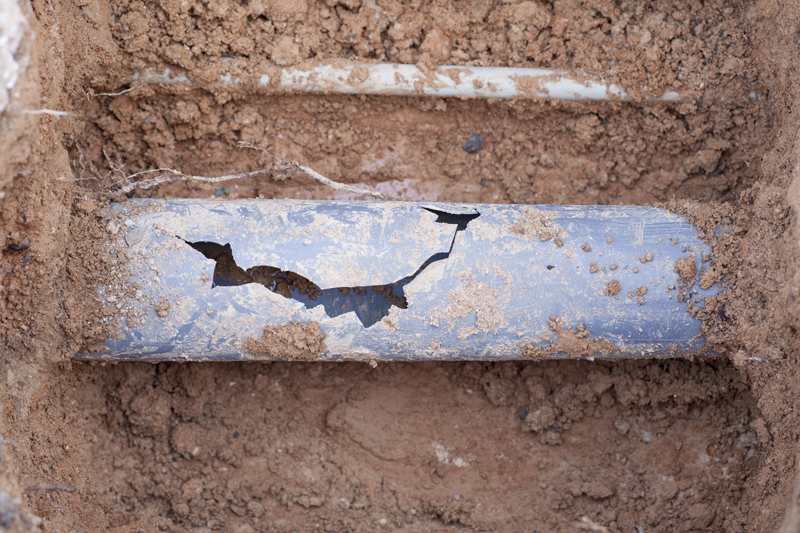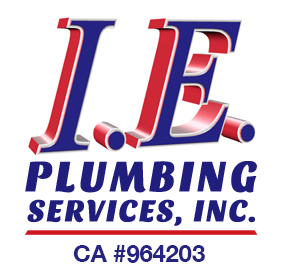
If you notice your backyard becoming a small lake every time it rains, the problem could go beyond poor drainage. A sewer line issue may be the culprit, causing water to accumulate in your yard due to blocked or damaged pipes. Not only is this frustrating, but it can also signal more serious plumbing issues that require prompt attention.
How Sewer Line Problems Cause Backyard Flooding
Your sewer line is responsible for transporting wastewater from your home to the municipal sewer system or a septic tank. When this line becomes blocked, damaged, or improperly aligned, it can result in a backup of water that has nowhere to go but up—right into your yard. Here’s how sewer issues contribute to backyard flooding:
- Clogs in the Sewer Line: Tree roots, grease buildup, or other debris can cause a clog, preventing wastewater from flowing properly. When rain adds excess water to the system, it may force water back up through cracks and weak points in the pipe, creating puddles in your backyard.
- Damaged or Cracked Pipes: With age or pressure, sewer pipes can crack, allowing water to seep into the ground around them. During a heavy rainstorm, the additional water in the soil exacerbates this leakage, creating flooding in your yard. If you have older pipes, damage is often inevitable, making it essential to inspect and maintain them. Learn more about preventing sewer damage.
- Improper Slope or Installation Issues: Sewer lines should be installed with a gentle slope to encourage waste to flow away from the property. If your lines were installed incorrectly or have shifted over time, water may not drain properly, causing it to pool in low-lying areas, including your backyard.
Recognizing Signs of Sewer Line Problems
Backyard flooding isn’t the only indicator of sewer line trouble. Here are some additional signs that may signal a problem with your sewer system:
- Unpleasant Odors: If you smell foul odors in your yard, especially near the flooded area, it’s a strong indication of sewer line leakage or backup.
- Gurgling Sounds: Strange gurgling noises from toilets or drains could mean that air is trapped in your pipes due to a clog.
- Slow Drainage: Drains throughout your home may slow down if there’s an obstruction in the main sewer line.
- Sewage Backup: If water or sewage begins backing up in your sinks, tubs, or toilets during or after heavy rain, a sewer line issue is likely.
Why Rain Can Worsen Sewer Line Issues
When heavy rain saturates the soil, it adds weight and pressure to your underground pipes. In older systems, this can lead to shifts or even collapse of the sewer line. Additionally, excess water entering an already compromised pipe can cause overflows, bringing waste up through cracks and into your yard. Unfortunately, when left unchecked, these issues often escalate over time, resulting in larger and more expensive problems.
Addressing Sewer Line-Related Flooding: DIY or Professional?
When it comes to diagnosing and fixing sewer line problems, the complexity and risk involved mean it’s best left to professionals. While minor drain clogs inside your home can sometimes be handled with DIY methods, backyard flooding linked to sewer issues requires specialized tools and expertise.
Professional Solutions for Sewer Line Flooding
- Hydro Jetting: For clogs caused by grease, debris, or tree roots, hydro jetting uses high-pressure water to thoroughly clear the pipe. This can be especially effective for sewer lines, as it removes buildup without damaging the pipe walls.
- Camera Inspection: Before repairs, a camera inspection can confirm the exact cause and location of the issue. Plumbers insert a waterproof camera into the line to identify cracks, clogs, and other damage. This step is crucial to avoid unnecessary digging and repairs. Learn about the benefits of sewer camera inspections.
- Trenchless Sewer Repair: If your sewer line requires repair or replacement, trenchless methods like pipe bursting and relining allow for repairs with minimal digging, preserving your yard while resolving the issue.
Preventing Future Flooding: Maintaining Your Sewer Line
Routine sewer line maintenance can prevent backyard flooding and save you from costly repairs. Here are a few tips:
- Schedule Regular Inspections: Professional inspections identify issues before they escalate. Catching minor cracks or small clogs early can help prevent full line blockages and the need for extensive repairs.
- Avoid Planting Trees Near Sewer Lines: Tree roots are one of the main culprits of sewer line blockages. By keeping large trees away from sewer lines, you can reduce the risk of roots infiltrating your pipes.
- Proper Waste Disposal: Avoid flushing or pouring grease, wipes, or other non-degradable materials down the drain, as these can accumulate and cause severe blockages.
- Install a Backwater Valve: A backwater valve can help prevent sewage from backing up into your home or yard during heavy rains.
IE Plumbing, Serving Southern California
If your backyard floods after rain and you suspect a sewer line issue, IE Plumbing offers reliable solutions throughout Southern California. Our team provides camera inspections, hydro jetting, and trenchless sewer repairs to keep your yard dry and your plumbing running smoothly.

 951-375-9599
951-375-9599